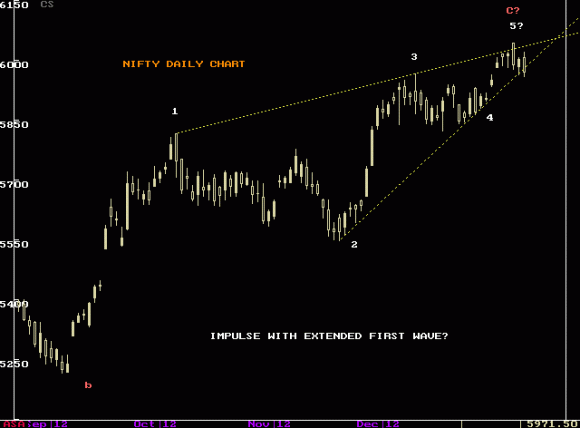The increasing complexity i.e. the overlapping and subdivided structure of the present rally confirms my view of ‘Bull market losing momentum’ I discussed in my last write-up.
It looks like the index is forming a terminal impulse pattern in wave 5 position. It is clear from the way the market is weakly pushing up that we are close to an intermediate top. We can easily observe that wave 5, instead of moving away from the 2-4 trend line, is oscillating about the line.
If I remove the price candles from the chart and keep only lines representing the waves then this fact stands out even more distinctly.
To confirm this view, this slow overlapping rally must end soon forming a market top at least for the time being.



















